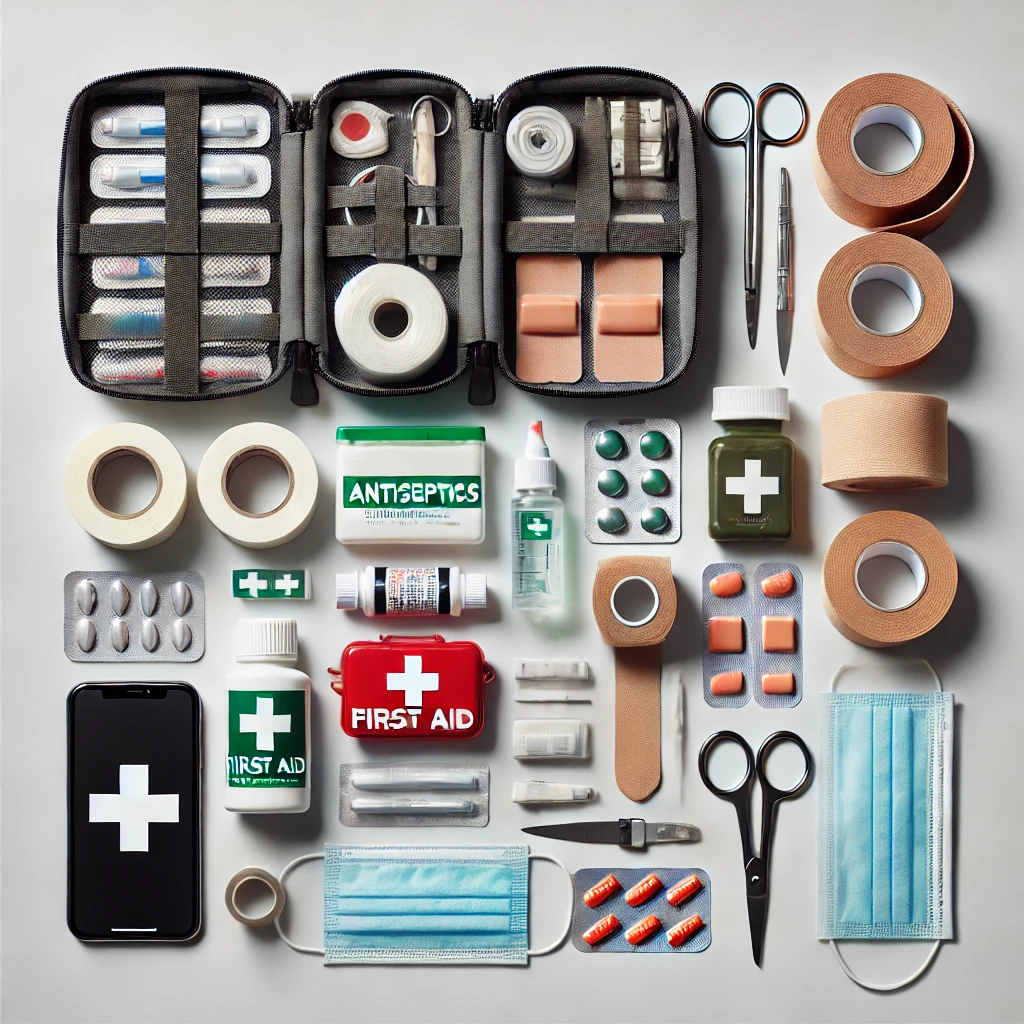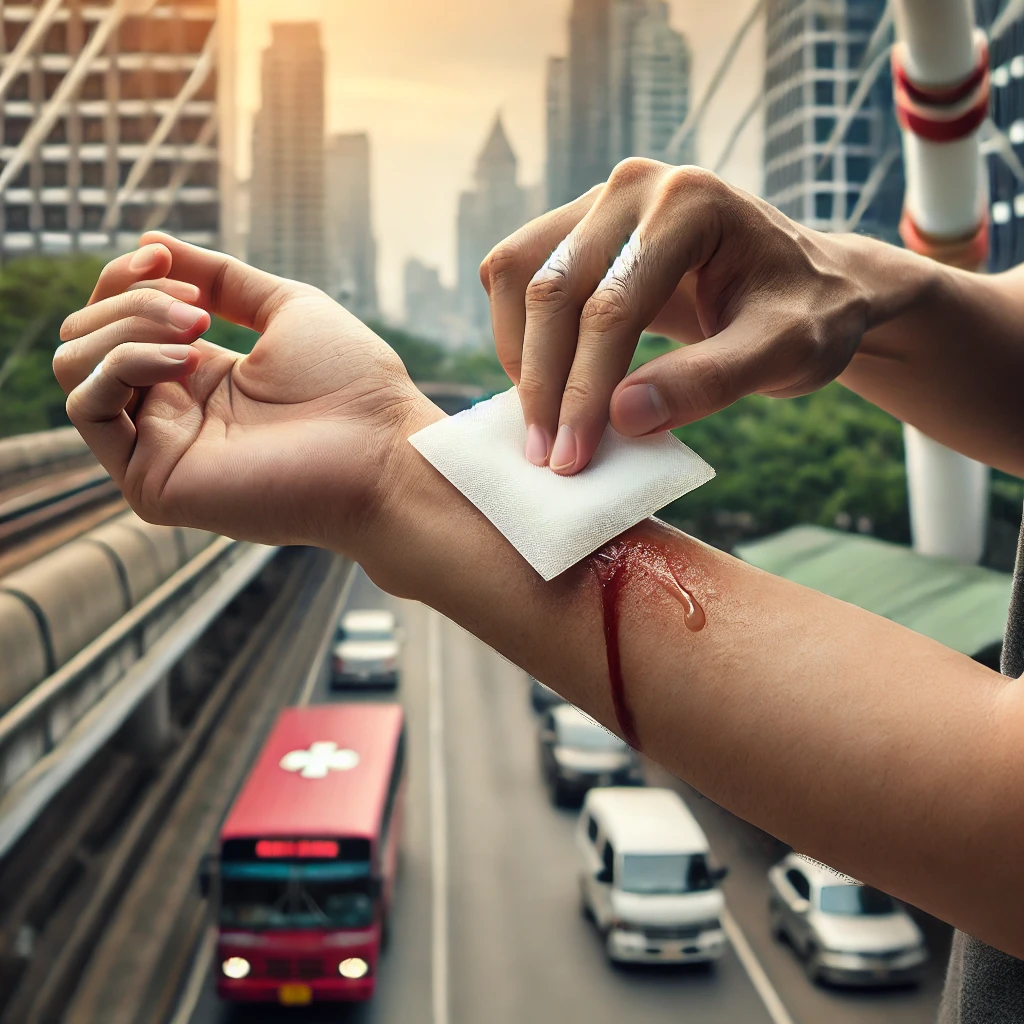In an urban crisis, access to medical facilities may be limited, and professional help could be delayed or unavailable. Having a well-prepared first aid kit and basic medical knowledge can mean the difference between minor injuries and serious complications. This guide covers essential urban first aid strategies to help you handle medical emergencies in a city environment.
Why Urban First Aid Skills Matter
In densely populated urban settings, medical emergencies can escalate quickly if professional help is delayed. Here are the key reasons why urban first aid skills are essential:
- Delayed Emergency Services: In a crisis, emergency responders may be overwhelmed, increasing response times.
- Health Risks from Dense Populations: Cities can become hazardous due to sanitation issues, increased exposure to infections, and limited access to clean water.
By being prepared with first aid skills and supplies, you can manage minor injuries and stabilize more serious conditions until help arrives.

Must-Have Items for an Urban First Aid Kit
Your first aid kit should be compact but comprehensive, covering a range of potential injuries and health concerns. Here are essential items to include:
- Bandages and Gauze: For treating cuts, scrapes, and other wounds. Choose various sizes for versatility.
- Antiseptics: Items like alcohol wipes, iodine, and hydrogen peroxide prevent infection.
- Pain Relievers: Over-the-counter medications like ibuprofen or acetaminophen help manage pain and inflammation.
- Medical Tape and Scissors: Essential for securing bandages and quickly accessing medical supplies.
- Splints and Elastic Bandages: For stabilizing sprains or fractures, which can occur during falls or accidents.
- First Aid Manual: A simple guide can be invaluable for quick reference during emergencies.
Practical Urban First Aid Techniques
These basic techniques will help you address common injuries and health issues in an urban setting.
1. Treating Cuts and Wounds
In an urban environment, injuries from broken glass, sharp objects, or falls are common. Here’s how to manage cuts and wounds effectively:
- Stop the Bleeding: Apply pressure with a clean cloth or gauze until bleeding stops.
- Clean the Wound: Use clean water and an antiseptic to remove any debris or dirt.
- Bandage Properly: Cover the wound with sterile gauze, securing it with medical tape to prevent infection.
2. Managing Fractures and Sprains
Fractures and sprains can result from falls or accidents. Knowing how to stabilize an injury before seeking professional help is essential.
- Immobilize the Area: Use a splint or any sturdy material to keep the injured area stable.
- Apply Cold Compress: Reduce swelling by applying a cold compress or ice pack wrapped in cloth for 15-20 minutes.
- Elevate: If possible, keep the injured area elevated to reduce swelling and pain.
3. Handling Respiratory Issues
Poor air quality, dust, and smoke are common in urban crises, leading to respiratory issues. Here’s how to mitigate them:
- Use N95 Masks: Keep N95 masks in your kit to protect against particulates and pollutants.
- Create an Improvised Filter: In the absence of masks, use a damp cloth over your mouth and nose to reduce inhalation of dust and debris.
4. Preventing and Treating Infections
In crowded and unsanitary conditions, infections spread quickly. Proper hygiene and wound care are essential for prevention.
- Hand Sanitizer: Keep a small bottle of hand sanitizer to maintain hygiene when water is scarce.
- Wound Monitoring: Check wounds daily for signs of infection, such as redness, swelling, or discharge.
Emergency Medical Skills for Urban Survival
Developing a few essential medical skills can help you stay prepared and effective in an emergency.
1. CPR and Basic Life Support
Cardiopulmonary resuscitation (CPR) is a critical skill that can save lives in respiratory emergencies. Consider taking a certified CPR course to learn proper techniques.
- Performing CPR: Use chest compressions and rescue breaths to maintain blood flow and oxygen levels until help arrives.
- Automated External Defibrillator (AED): Familiarize yourself with AEDs, which are often available in public spaces.
2. Recognizing and Treating Shock
Shock is a medical condition that can occur after traumatic injuries, burns, or extreme dehydration. Here’s how to recognize and address it:
- Symptoms: Look for confusion, rapid breathing, cold skin, and weakness.
- Treatment: Have the person lie down with their feet elevated, cover them with a blanket, and provide fluids if they’re conscious.
3. Using Tourniquets in Severe Bleeding
In extreme cases, where severe bleeding cannot be controlled, using a tourniquet can prevent life-threatening blood loss.
- Tourniquet Application: Place the tourniquet above the injury and tighten it until bleeding stops. Note the time of application and seek professional help as soon as possible.
Building an Urban Medical Network
During a prolonged crisis, forming a medical support network with trusted neighbors or community members can be valuable.
- Skills Sharing: Pool medical skills and resources to strengthen your network.
- Community Health Awareness: Set up regular check-ins to monitor for signs of infection or illness, helping to prevent outbreaks in crowded environments.

Conclusion
Urban first aid preparedness is about more than just having a kit—it’s about knowing how to act quickly and effectively in a medical emergency. By assembling essential supplies, practicing basic medical skills, and understanding how to handle common injuries, you can protect yourself and those around you in any urban crisis.


